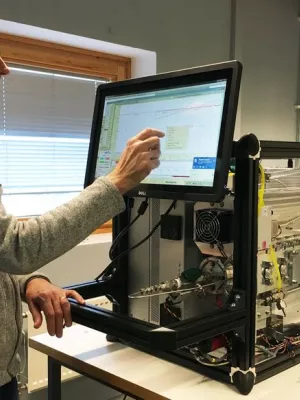
Erik Swietlicki
Professor

Deterioration of air quality across Sweden due to transboundary agricultural burning emissions
Author
Summary, in English
Targino, A. C., Krecl, P., Johansson, C., Swietlicki, E., Massling, A., Coraiola, G. C. & Lihavainen, H. 2013: Deterioration of air quality across Sweden due to transboundary agricultural burning emissions. Boreal Env. Res. 18: 19-36. We analyzed measurements of aerosol and trace-gas concentrations from sites across Sweden before and during a series of agricultural wildland fires in eastern Europe in spring 2006. During the burning episodes, concentrations of background particulate matter (PM) and trace gases, such as carbon monoxide and ozone, increased, affecting air quality across the country and violating national air quality standards. The European Union PM10 daily limit value of 50 mu g m(-3) was exceeded during the pollution episodes even at the background stations, resulting in a nearly four-fold increase as compared with that in non-episode conditions. In relation to a non-episode period, the concentration rise in the accumulation-mode particles was from 40% at an urban site to 340% at a rural site, causing an increase in total particle number concentrations. The fires also boosted ground-level ozone, increasing concentrations of this pollutant by up to 100% at the background stations, which exceeded national air quality standards. Both elemental (EC) and organic carbon (OC) levels increased, with OC making a larger contribution to the total carbonaceous concentrations during the biomass burning episodes. The large-scale atmospheric circulation determined the strength and timing of the pollution events, with the eastern and northern sectors of Sweden experiencing two pollution pulses, whilst sites in the western and southern sectors were affected by one shorter episode. The results show that regional air quality deteriorated due to the long-range transport of pollutants emitted during agricultural wildfires.
Department/s
- Nuclear physics
- NanoLund: Centre for Nanoscience
- MERGE: ModElling the Regional and Global Earth system
Publishing year
2013
Language
English
Pages
19-36
Publication/Series
Boreal Environment Research: An International Interdisciplinary Journal
Volume
18
Issue
1
Links
Document type
Journal article
Publisher
Finnish Zoological and Botanical Publishing Board
Topic
- Subatomic Physics
Status
Published
ISBN/ISSN/Other
- ISSN: 1239-6095